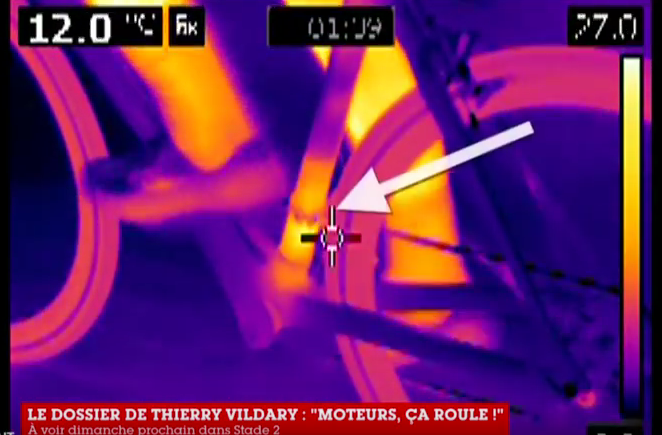Using thermal cameras to find motors would mean even more motorcycles, says UCI
Mark Barfield, the UCI's technical chief, has said that motorcycles would need to be in close proximity with riders to even have a chance of working

Safety concerns are one of the main reasons for not using thermal imaging cameras to detect motors in bikes according to the man charged with stamping out motorised doping from cycling. Mark Barfield, the UCI's Technical Manager, says that thermal imaging cameras would require more motorbikes to be in close proximity to the peloton, potentially putting riders at risk.
"In order to deploy a test using thermal imaging, we would need to put motorcycles alongside the peloton, not behind, not in front, but alongside", said Barfield. "We would need to have a few motorcycles out there to conduct the test, which is clearly a safety concern."
>>> Stalled motorcycle causes huge crash in Red Hook Criterium (video)
"As soon as you start to talk about increasing the number of motorcycles in a bike race, it’s not a popular subject."
Barfield's comments come after a French TV report used to thermal imaging cameras to claim that riders were using motors in Strade Bianche and Coppi e Bartali, as well as a number of incidents involving riders colliding with motorcycles in races, including Antoine Demoitié who died after being struck by a race motorcycle during Ghent-Wevelgem in March.
Watch: Industry reacts to motorised doping scandal
Apart from the problem of rider safety, Barfield also restated the other reasons why the UCI decided against using thermal imaging cameras to detect motors in bikes.
The latest race content, interviews, features, reviews and expert buying guides, direct to your inbox!
"If you have one rider with a motor in a bike then it’s very easy to use thermal imaging camera. But if you have 150, 200, or even 10 riders then it becomes a much more difficult challenge. So yes thermal imaging works, but it’s not the most consistent and effective method for detecting motors under certain circumstances.
"It also requires a clear line of sight, so the camera must be able to see the area where the motor is installed in order for it to be able to work. This is complicated by riders’ limbs, other bikes, and anything else in the race environment.
>>> Electric motor system used by banned Belgian cyclist revealed by UCI
"Thermal imaging cameras can also be confused by environmental heat and by other heat sources on the bike, such as the rider and mechanical friction. And it can be difficult if not impossible to identify a rider and isolate them from the image from the thermal imaging camera. It would require additional cameras or other methods of identification."
Barfield also said that the UCI's current method of testing for motors, which uses an iPad and an adaptor that creates a structured magnetic field to detect solid areas of magnetic resistance within the frame or wheels, would soon be made available to national federations, raising the possibility that checks could soon take place in national or even regional races.
Henry Robertshaw began his time at Cycling Weekly working with the tech team, writing reviews, buying guides and appearing in videos advising on how to dress for the seasons. He later moved over to the news team, where his work focused on the professional peloton as well as legislation and provision for cycling. He's since moved his career in a new direction, with a role at the Department for Environment, Food and Rural Affairs.